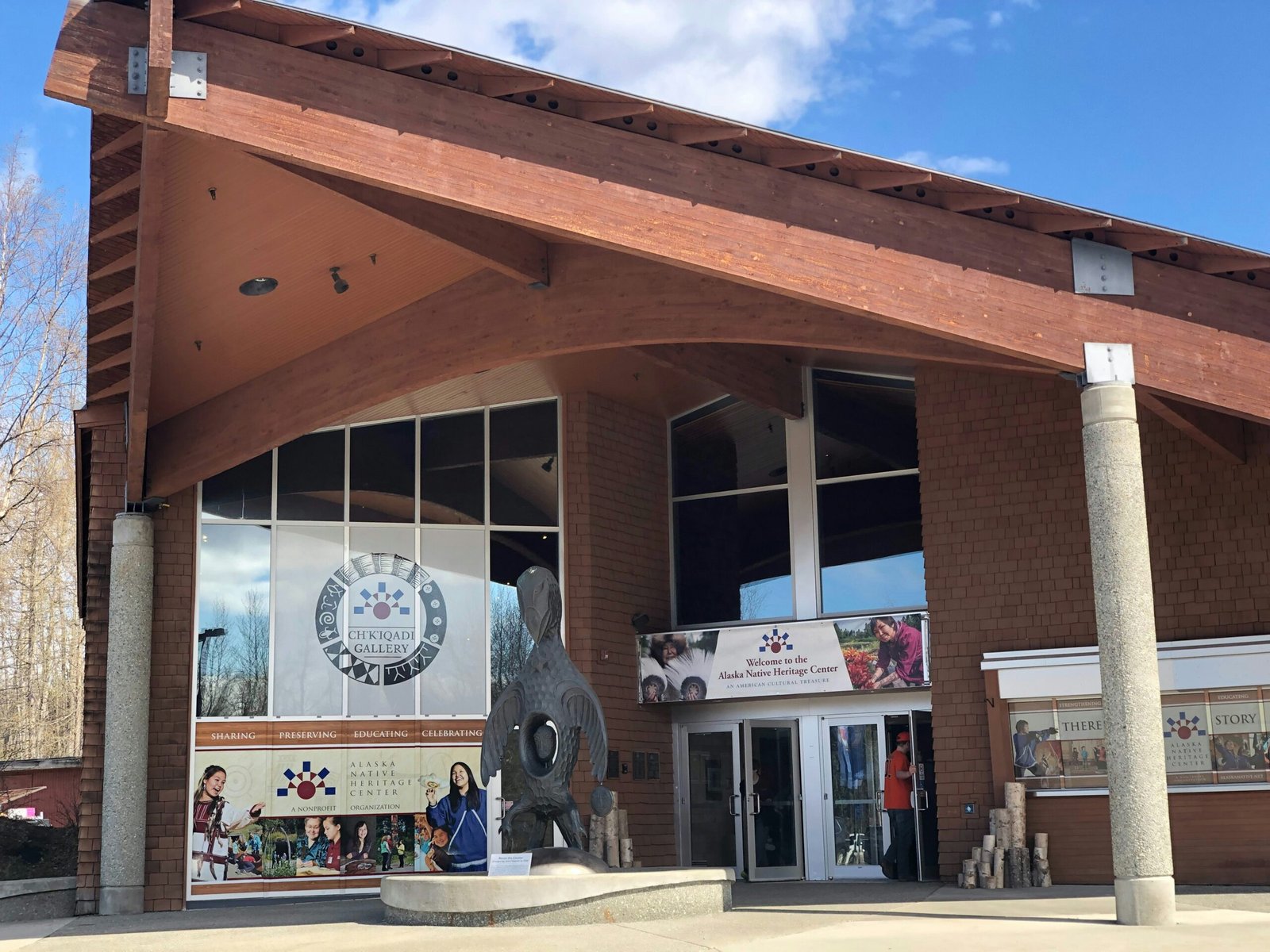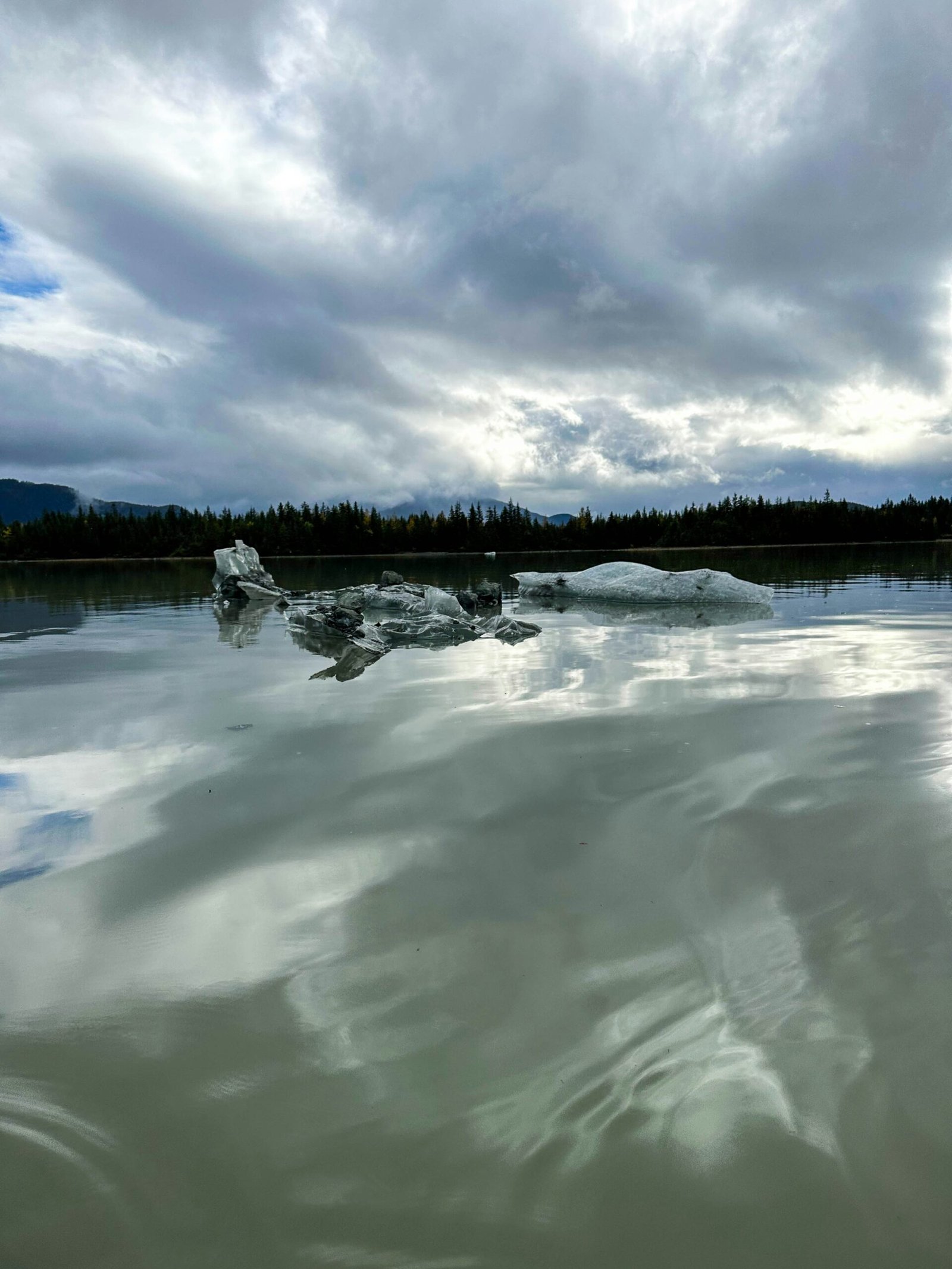
As visitors enter the Klondike Gold Rush National Historical Park, they are immediately transported to a time when the pursuit of gold consumed the dreams and aspirations of thousands of individuals. The park’s exhibits and displays provide a comprehensive and immersive experience, allowing visitors to gain a deep understanding of the hardships and triumphs of those who ventured into the Klondike in search of fortune.
One of the highlights of the park is the Trail of ’98, a historic trail that winds its way through the rugged Alaskan wilderness. This trail was the main route used by prospectors during the gold rush and offers visitors the opportunity to retrace the footsteps of those who came before them. Along the trail, hikers can marvel at the breathtaking beauty of the surrounding landscape, with towering mountains, pristine lakes, and dense forests creating a truly awe-inspiring backdrop.
In addition to the Trail of ’98, the Klondike Gold Rush National Historical Park also features a number of preserved historic buildings that provide a glimpse into life during the gold rush. The most notable of these is the Moore House, a restored cabin that once belonged to the Moore family, who played a significant role in the development of Skagway. Visitors can explore the cabin and learn about the challenges faced by the early settlers, as well as the impact of the gold rush on the local community.
For those seeking a more in-depth understanding of the gold rush, the park offers a variety of educational programs and interpretive exhibits. From guided tours led by knowledgeable park rangers to interactive displays that allow visitors to try their hand at gold panning, there are plenty of opportunities to learn and engage with the history of the Klondike. The park also hosts regular events and demonstrations, such as blacksmithing workshops and historical reenactments, further bringing the past to life.
While the Klondike Gold Rush National Historical Park is undoubtedly a place of historical significance, it is also a haven for outdoor enthusiasts. The park offers a range of recreational activities, including hiking, camping, and fishing, allowing visitors to fully immerse themselves in the natural beauty of the Alaskan wilderness. Whether exploring the historic trails or simply enjoying the tranquility of the surroundings, a visit to this park is sure to be an unforgettable experience.
In conclusion, the Klondike Gold Rush National Historical Park is a must-visit destination for history buffs, nature lovers, and adventure seekers alike. With its rich history, stunning scenery, and wealth of recreational opportunities, this park offers something for everyone. So, whether you are interested in delving into the past, exploring the great outdoors, or simply enjoying the beauty of Alaska, make sure to add the Klondike Gold Rush National Historical Park to your travel itinerary.
Once the prospectors arrived in the Klondike, they faced a whole new set of challenges. The first task was to stake a claim on a piece of land where they believed gold could be found. This was not an easy task, as the most promising areas were already claimed by others who had arrived earlier. Many prospectors were left with less desirable land or had to purchase claims from those who had already staked their territory.
Once a claim was secured, the hard work of mining began. The prospectors had to dig deep into the frozen ground, often using pickaxes and shovels to break through the permafrost. The frozen soil had to be thawed, either by building fires or using steam-powered thawing machines. This process was time-consuming and physically demanding, but the promise of finding gold kept the prospectors going.
As the mining operations grew, so did the need for supplies. Entrepreneurs quickly capitalized on this demand, setting up shops and businesses in the Klondike to cater to the needs of the prospectors. These businesses sold everything from food and clothing to mining equipment and tools. The prices for goods were exorbitant, as the demand far outweighed the supply. It was not uncommon for a single egg to cost a dollar or more.
Despite the high cost of living and the grueling work, many prospectors managed to strike it rich. The most successful miners were able to extract large quantities of gold from the ground, making them instant millionaires. However, for every successful miner, there were countless others who struggled to find even a speck of gold. The harsh reality was that the majority of the prospectors did not find the wealth they had hoped for.
The Klondike Gold Rush had a profound impact on the region. The population of the Yukon Territory exploded as people from all walks of life flocked to the area in search of gold. The influx of people led to the establishment of new towns and cities, such as Dawson City, which quickly became the heart of the gold rush. The economy boomed, and infrastructure was developed to support the growing population.
However, as quickly as the gold rush began, it also came to an end. By the early 1900s, most of the easily accessible gold had been mined, and the prospectors began to move on to other regions in search of new opportunities. The population of the Yukon Territory dwindled, and many of the towns that had sprung up during the gold rush were abandoned.
Today, the Klondike Gold Rush is remembered as a pivotal moment in Canadian history. It represents the spirit of adventure and the pursuit of dreams, as well as the harsh realities and challenges that come with it. The legacy of the gold rush can still be seen in the Yukon Territory, where remnants of the mining operations and the stories of the prospectors continue to capture the imagination of visitors.
Exploring the Park
Today, the Klondike Gold Rush National Historical Park offers visitors the chance to explore the remnants of this historic event. The park consists of several sites, each offering a unique perspective on the gold rush.
1. Skagway Historic District
The Skagway Historic District is the heart of the park and is where most visitors begin their journey. This district preserves the town’s historic buildings, including the famous Red Onion Saloon and the Arctic Brotherhood Hall. Walking through the streets of Skagway feels like stepping back in time, with wooden sidewalks and buildings that transport visitors to the days of the gold rush.
As you explore the Skagway Historic District, you can immerse yourself in the stories of the gold rush era. Visit the Klondike Gold Rush National Historical Park Visitor Center, where you can learn about the history of the gold rush through exhibits and interactive displays. Take a guided tour or join a ranger-led program to gain a deeper understanding of the challenges faced by the prospectors who flocked to this region in search of fortune.
2. Chilkoot Trail
The Chilkoot Trail is a 33-mile long trail that follows the same path that prospectors took during the gold rush. Today, it offers hikers a chance to retrace the steps of those brave individuals. The trail takes you through stunning landscapes, including dense forests, alpine meadows, and breathtaking mountain views. It’s a challenging hike, but the sense of accomplishment and the opportunity to connect with history make it well worth the effort.
Before embarking on the Chilkoot Trail, it is important to be prepared. The trail is known for its rugged terrain and unpredictable weather conditions, so make sure to bring proper hiking gear and be aware of the potential hazards. Along the way, you’ll encounter historical artifacts, such as rusted tools and remnants of old campsites, which serve as reminders of the arduous journey undertaken by the prospectors. Take your time to appreciate the natural beauty and reflect on the determination and resilience of those who braved this trail in pursuit of gold.
3. White Pass Trail
The White Pass Trail is another historic trail that was used by prospectors during the gold rush. This trail, which is now accessible by train, offers visitors a scenic journey through rugged mountain terrain. The train ride provides stunning views of waterfalls, glaciers, and deep canyons, allowing visitors to appreciate the natural beauty of the area while learning about the challenges faced by those who traveled this route in search of gold.
As the train winds its way through the White Pass, you’ll pass by landmarks that played a significant role in the gold rush, such as the infamous “Dead Horse Gulch,” where many pack animals lost their lives due to the treacherous conditions. Along the route, knowledgeable guides share stories and anecdotes, bringing the history of the gold rush to life. The train ride offers a comfortable and leisurely way to experience the rugged beauty of the Klondike region, making it a popular choice for visitors of all ages.
4. Hiking and Nature Trails
In addition to its rich history, the Klondike Gold Rush National Historical Park boasts stunning natural beauty. The park offers a variety of hiking and nature trails that allow visitors to explore its diverse landscapes. From lush forests to rugged mountains, these trails offer a chance to immerse yourself in the wilderness and witness the same breathtaking views that the gold rush pioneers encountered.
One popular trail is the Chilkoot Trail, which stretches for 33 miles from Dyea, Alaska to Bennett, British Columbia. This historic trail was once the main route used by gold seekers to access the Klondike goldfields. Today, hikers can follow in their footsteps and experience the challenges and triumphs of the gold rush journey.
For those seeking a shorter hike, the Lower Dewey Lake Trail in Skagway is a great option. This 2.5-mile loop trail takes you through a picturesque forest and leads to the tranquil shores of Lower Dewey Lake. It’s the perfect spot to relax, have a picnic, or even go for a refreshing swim.
5. Wildlife Viewing
The Klondike Gold Rush National Historical Park is home to a diverse array of wildlife. As you explore the park, keep an eye out for the chance to spot some of its resident animals. From majestic bald eagles soaring overhead to playful river otters frolicking in the water, there are plenty of opportunities for wildlife viewing.
If you’re lucky, you may even catch a glimpse of a black bear or a moose grazing in the meadows. Birdwatchers will also delight in the park’s avian inhabitants, including the elusive Northern Hawk Owl and the colorful Harlequin Duck.
Remember to maintain a safe distance and observe wildlife from a respectful distance to ensure their well-being and your own safety.
Preserving a Piece of History
The Klondike Gold Rush National Historical Park is not only a scenic spot but also an important site for preserving and honoring the history of the gold rush. The park’s dedicated staff and volunteers work tirelessly to maintain the historic buildings, trails, and artifacts, ensuring that future generations can continue to learn from and appreciate this significant event.
At the Klondike Gold Rush National Historical Park, visitors have the opportunity to step back in time and experience the thrill and hardship of the gold rush era. The park boasts a collection of well-preserved buildings that were once bustling with activity, including the iconic Skagway Historic District, where visitors can explore the wooden boardwalks and storefronts that transport them to the late 19th century.
One of the highlights of the park is the Klondike Gold Rush Museum, which offers a comprehensive overview of the gold rush and its impact on the region. Here, visitors can delve into the stories of the prospectors who braved treacherous conditions and embarked on a grueling journey to seek their fortune in the goldfields of the Klondike. The museum’s exhibits showcase a wealth of artifacts, photographs, and interactive displays that bring the era to life.
For those seeking outdoor adventure, the park offers a network of scenic trails that wind through the rugged landscape. Hiking enthusiasts can embark on the historic Chilkoot Trail, a challenging route that follows in the footsteps of the gold rush stampeders. Along the way, hikers can marvel at the stunning natural beauty of the surrounding mountains and valleys, imagining the hardships faced by those who traversed this unforgiving terrain.
Whether you’re a history enthusiast, an outdoor adventurer, or simply someone looking for a unique and educational experience, the Klondike Gold Rush National Historical Park has something to offer. It’s a place where the past comes alive, allowing visitors to immerse themselves in the stories and struggles of those who sought their fortune in the Klondike goldfields.
Plan your visit to the Klondike Gold Rush National Historical Park and discover the beauty, history, and adventure that await you in this scenic spot of rich history.




